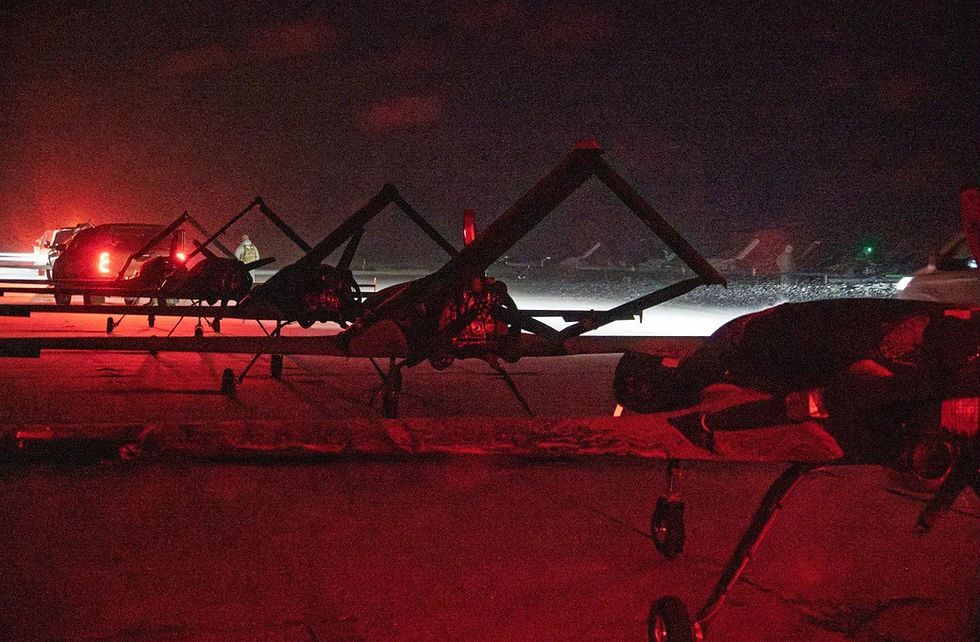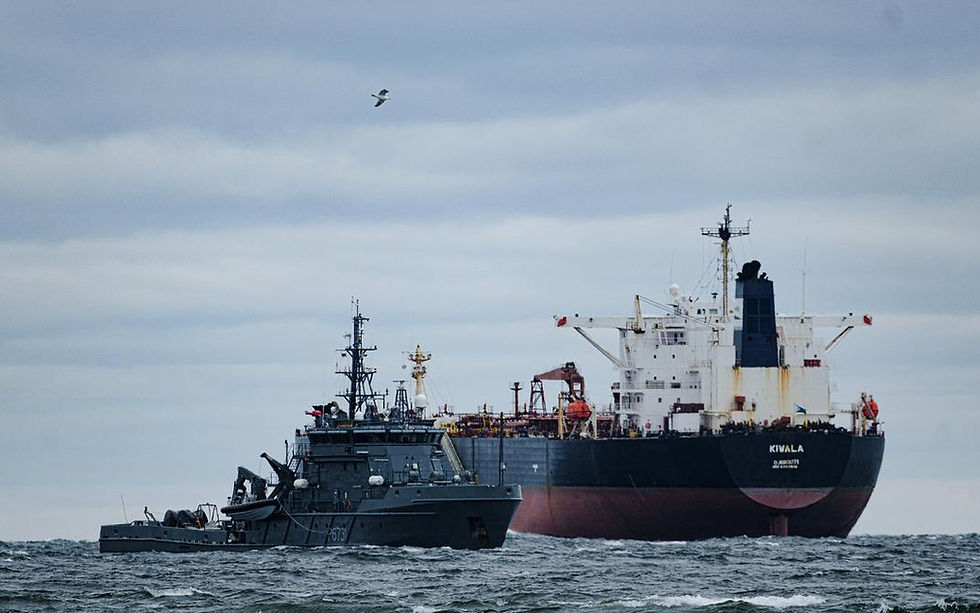Flight Risk: Baltics Scramble to Counter Hybrid Drone Threat
- Res Publica

- Aug 5, 2025
- 4 min read
Drone incursions have sparked growing concern across the Baltic States as Moscow and Minsk prepare for military exercises.
By Eitvydas Bajarūnas

Russian Gerbera drone crashed in Lithuania / Lithuanian Armed Forces
An unidentified drone crossed into Lithuania from Belarus on July 28, just 18 days after a Russian-made “Gerbera” drone crashed after crossing the same border. The incursions followed a similar incident in September, when an unmanned aircraft entered Latvian airspace from Russia.
While Baltic airspace violations are not new, the context and timing suggest an emerging hybrid campaign to probe, destabilize, and prepare the battlespace ahead of September’s Russian-Belarus “Zapad” military exercise.
Russia’s toolkit in the Baltics has long included disinformation campaigns, cyberattacks, infrastructure sabotage, political subversion, even illegal immigration, and now encompasses drones. The aircraft are best known as conventional battlefield threats, capable of conducting reconnaissance, targeting infrastructure, and delivering kinetic strikes, but they also pose a hybrid threat.
They appear to be deployed by Moscow to test military readiness, evaluate institutional response, provoke political reaction, and sow public anxiety in the Baltic states in line with Russia’s hybrid warfare doctrine.
And for Lithuania, the incursions come at a particularly vulnerable moment as the country is still developing its air defense and detection capabilities. Lithuanian Chief of Defense Raimundas Vaikšnoras called for preemptive interception of drones before they cross into Lithuanian airspace, underscoring both the gaps in the current rules of engagement and the urgent need for doctrinal updates.
It is not an isolated or new phenomenon. In 2024, a wave of unidentified balloons entered Lithuanian airspace, which, while initially dismissed as harmless, may also have been part of a hybrid testing campaign — likely aimed at gauging reaction times and public response.
Experts have warned that NATO air defenses remain vulnerable to such low-cost, high-impact provocations.
What makes the current drone incursions particularly significant is their timing. With “Zapad 2025” looming, Russia has an incentive to pre-shape the regional security environment. Drone flights can probe sensor coverage, stress-test the Baltics’ command and control, and exploit the potential for public panic or political discord.
Lithuania’s own response is evolving, and it has begun positioning air defense units closer to Belarus as engagement protocols are reviewed. Plans include the possibility of closed air corridors for faster NATO intercepts, mobile units to jam GPS and other navigation signals, rapidly deployable mobile air defence systems to intercept threats, and legal changes to allow swifter drone neutralization in emergency situations.
Senior officials acknowledge “holes” in national air defense and a need for greater interagency coordination. By the end of August, Lithuania aims to finalize new drone response procedures, unify reporting practices, and improve real-time data exchange.
A Ukrainian-developed acoustic drone detection system is being procured, with deployment expected by 2026. In parallel, the Ministry of Defense is accelerating investment in drone and electronic warfare capabilities – allocating 300m euros ($344m) by 2030.
But technical upgrades are not enough, and the psychological component of hybrid warfare must be met with societal resilience. Moscow’s drone incursions are as much about undermining public trust as they are about airspace violations.
That means both institutional calm and public composure are essential. Media outlets, officials, and commentators must avoid amplifying fear or speculation and should focus on clear communication, coherence, and the ability to distinguish between actual risk and psychological manipulation.
Seen in this light, drone incidents are not just threats but also opportunities to test national preparedness. If handled effectively, they can strengthen Lithuania’s hybrid defenses. Rather than exposing vulnerabilities, they can signal growing resilience.
To ensure comprehensive protection, NATO and the European Union must also elevate their involvement. The alliance should prioritize the integration of Baltic airspace into joint drone surveillance networks and reinforce rules of engagement that allow quicker reaction to threats.
Counter-drone technologies should become standard in NATO’s Enhanced Forward Presence, and message coordination should be improved to prevent panic and disinformation during ambiguous incidents.
The EU, for its part, should consider adapting existing defense funding mechanisms to support the purchase of drone detection systems, electronic warfare gear, and civilian-military training for the Baltics. EU hybrid and cyber centers could also play a key role in monitoring drone-linked disinformation campaigns and bolstering information resilience.
Just as importantly, the Baltics must integrate battlefield lessons from Ukraine. Kyiv has demonstrated exceptional agility in countering mass drone threats, for example, by leveraging civilian sensors, mobile apps, and decentralized early-warning networks. The Baltic states should adapt these tactics for their own use and engage civil defense structures and municipalities in the effort.
The drone flights are not accidents or one-offs; they are deliberate stressors designed to erode confidence and must be met with agility, clarity, and coordination. Hybrid warfare is fought both in the air and in the mind. Lithuania’s challenge is to pass the test on both fronts before “Zapad” begins in earnest.
By Eitvydas Bajarūnas. Eitvydas Bajarūnas is an ambassador in the Ministry of Foreign Affairs of the Republic of Lithuania, and a Center for Europe Policy Analysis (CEPA) Non-resident Senior Fellow. Article first time published on CEPA web page. Prepared for publication by volunteers from the Res Publica - The Center for Civil Resistance.





Comments